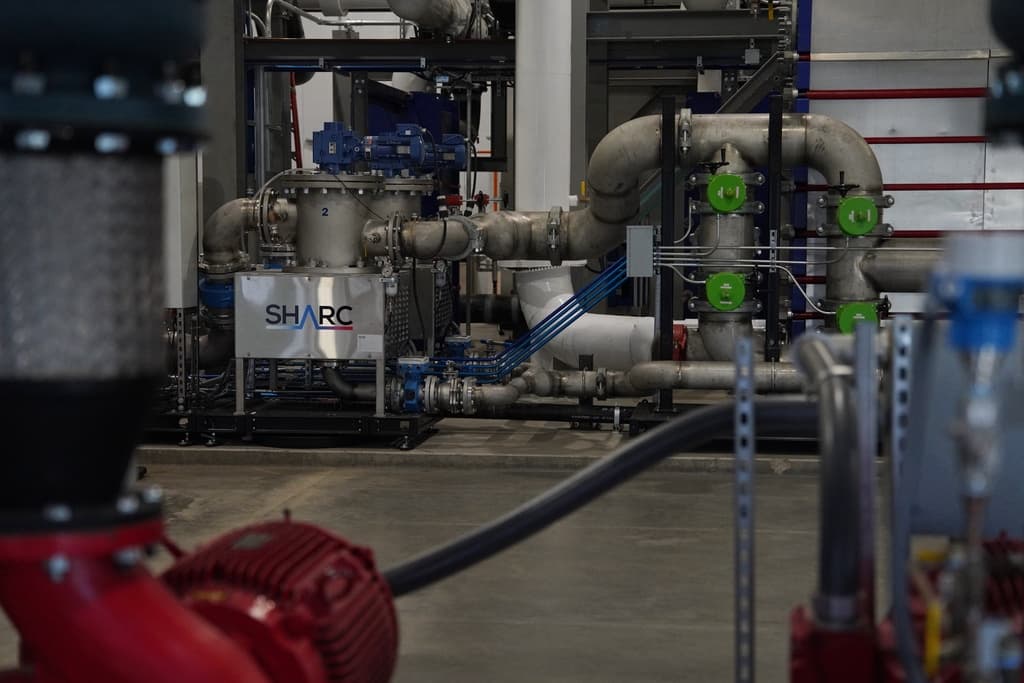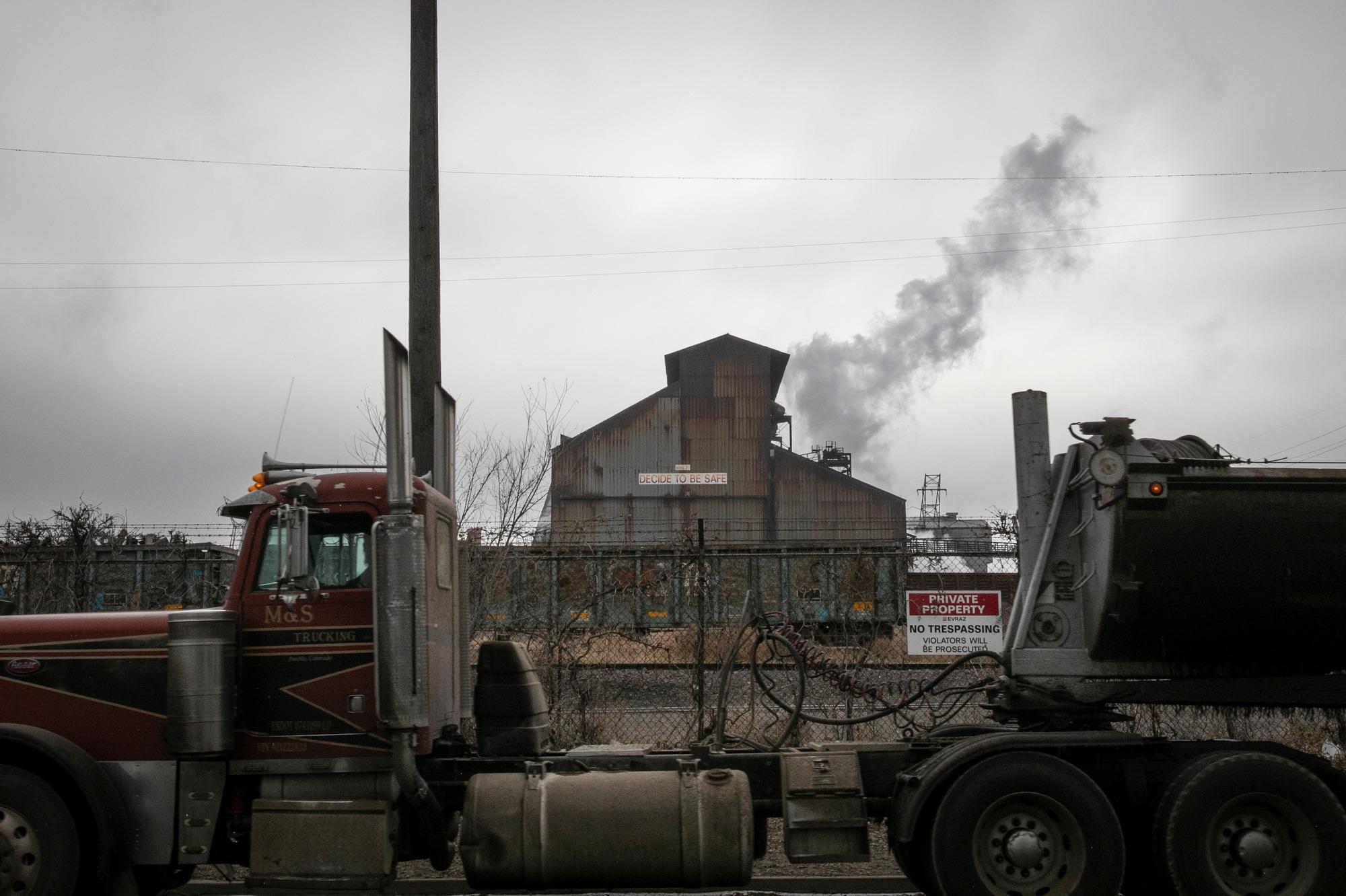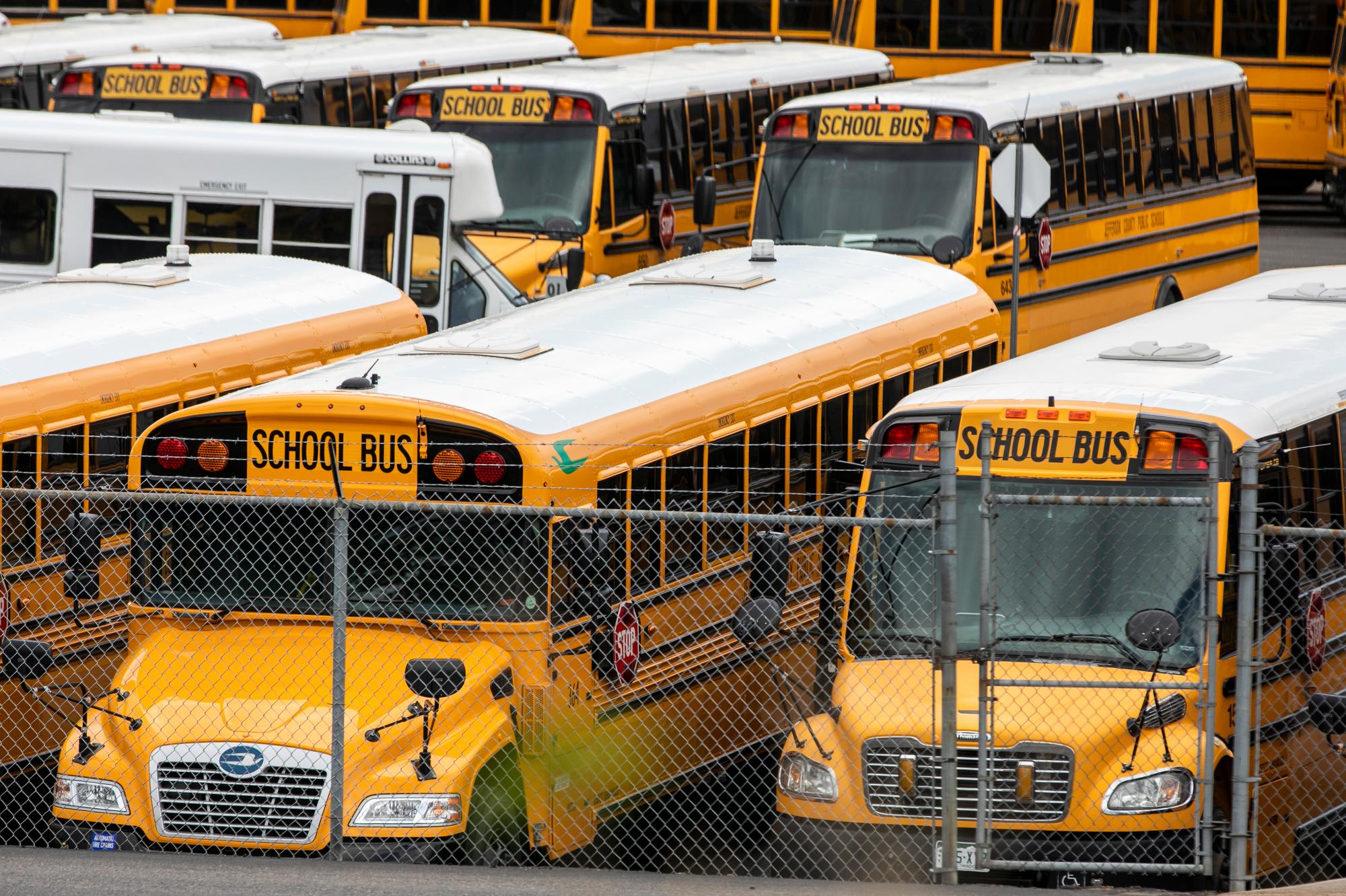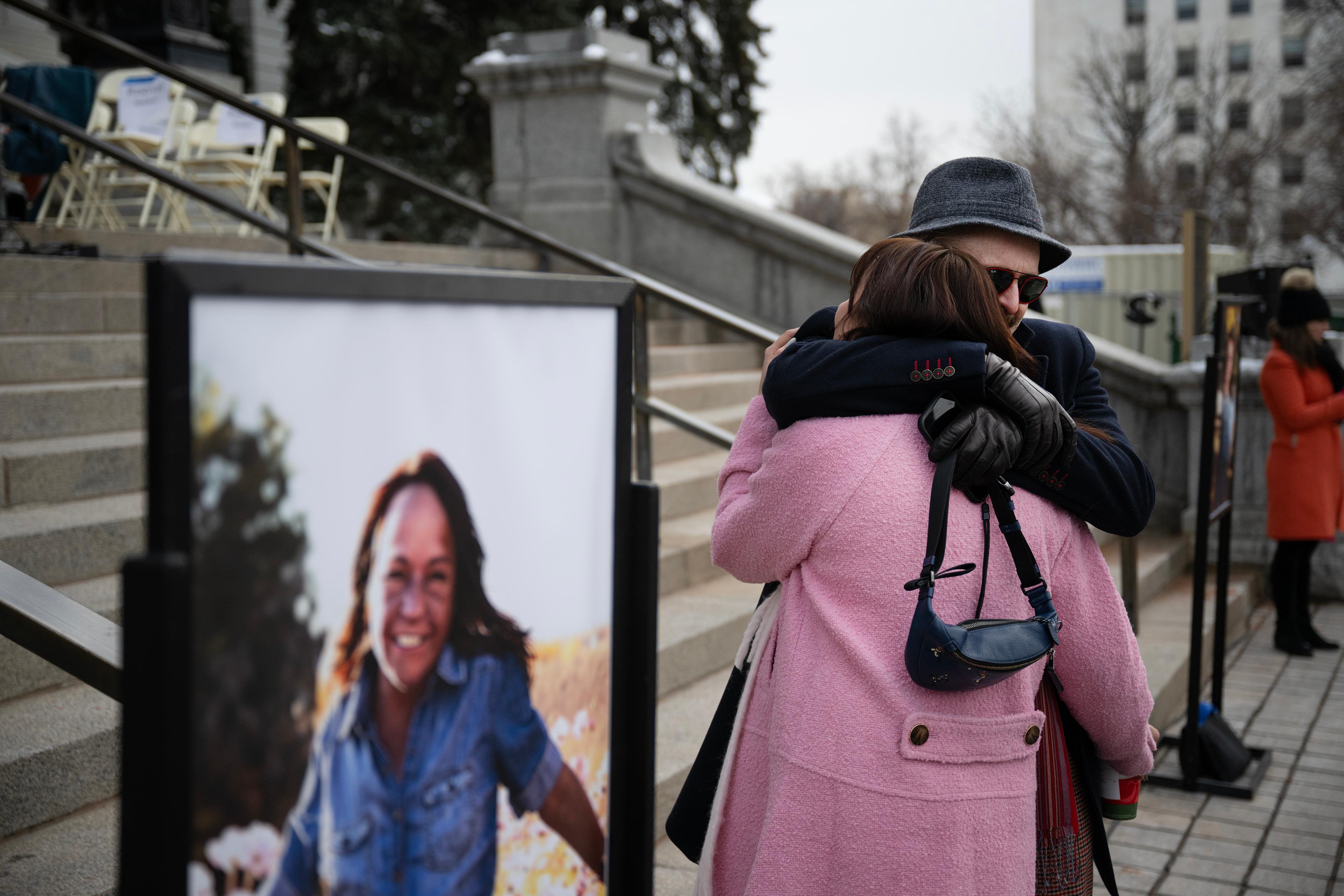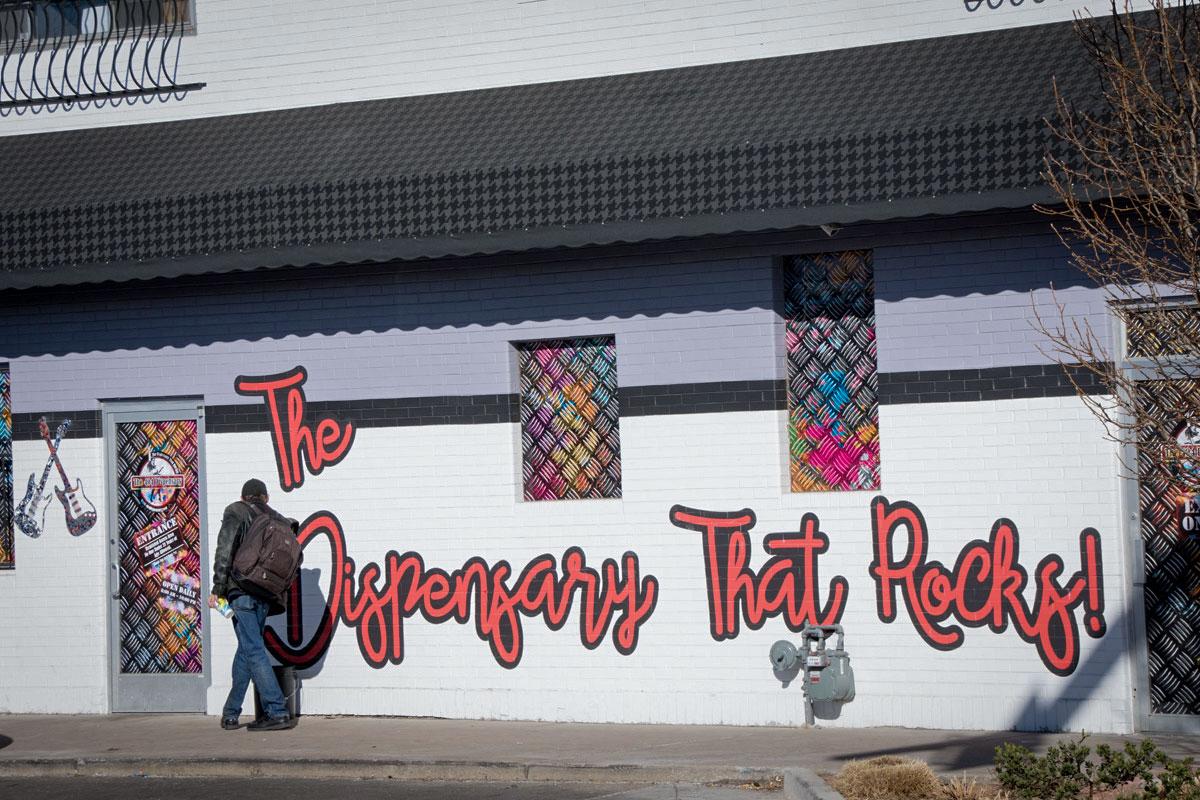
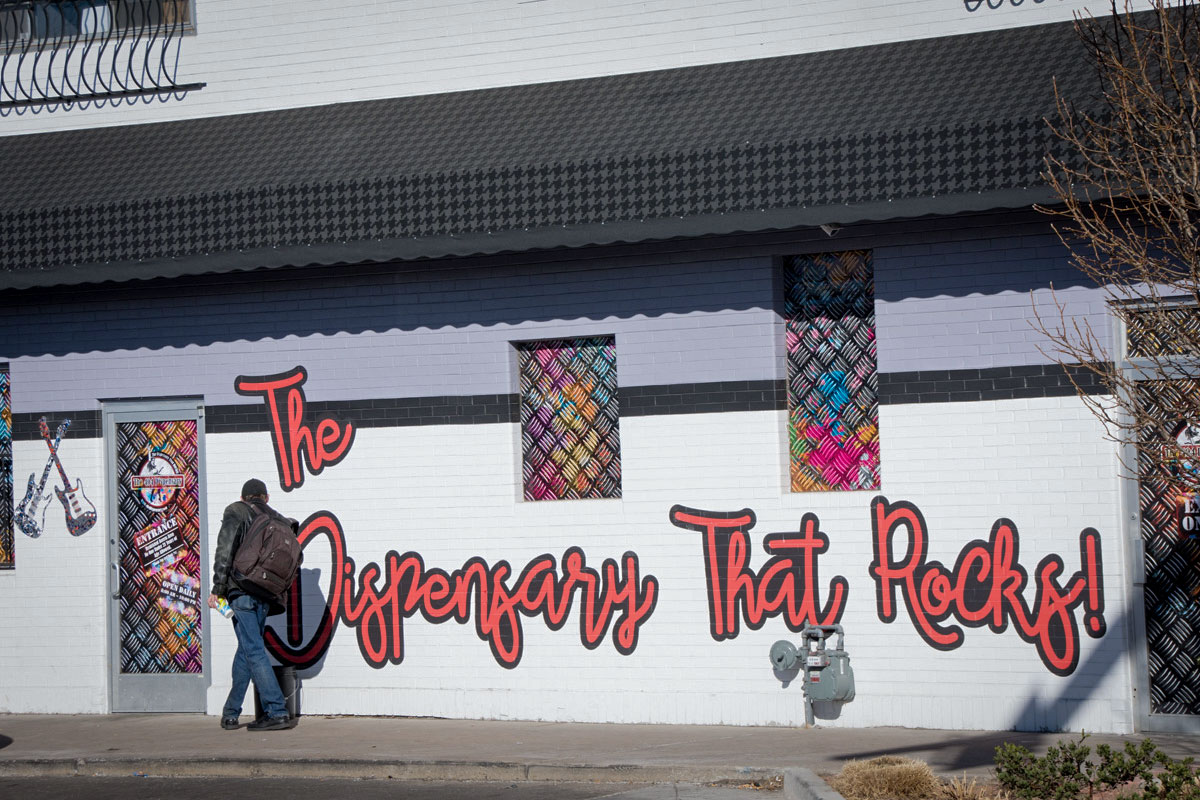
Economists with Colorado State University-Pueblo’s Institute of Cannabis Research found that marijuana sales netted some $35 million for the Pueblo area in 2016. That's after factoring in any marijuana-related increase in costs.
Researchers also heard that some homeless people may be drawn to Pueblo for legal pot. But ICR sociologist Timothy McGettigan said Pueblo’s homeless problem is more complicated than that — and the recent increases are due more to rising housing and utility costs.
“The idea that people have been coming to Colorado from out of state in droves, spending their last dime on cannabis and then lining up at soup kitchen queues and at social service agencies is not really accurate,” he said. “The picture is much different than that.”
The first-of-its-kind pilot research was funded largely by local and state marijuana taxes, and was presented to the Pueblo Board of County Commissioners Monday. CSU-Pueblo is the first university to do this type of research.
“This is truly a momentous day,” said Pueblo County Commissioner Sal Pace.
ICR researchers also found that while crime has increased in Pueblo since legalization, that is more likely due to an increase in population combined with a decrease in law enforcement officers. On top of that, “The lack of clarity on some of the marijuana laws is difficult for them,” said ICR director Rick Kreminski.
Researchers recommend creating better systems for tracking-marijuana related crime. Finding optimal buffer zones around outdoor grow operations to prevent cross-pollination was another topic looked at by the study.
Report Highlights
The 218-page study was split into three main sections: social impact, economic impact and water and energy impact. Each section was further divided into subcategories. What follows is a selection of report highlights, quoted from the document.
Social Impact - Demographics:
“The population characteristics that defined Pueblo prior to cannabis legalization have remained largely unchanged in its wake. Pueblo’s population has increased since the passage of Amendment 64, but the rate of population increase has remained roughly unchanged before and after cannabis legalization.”
“Some have argued that Pueblo has been inundated by migrants since cannabis has been legalized; we found no direct quantifiable evidence to support that perspective. Out-of-state migrants to Colorado generally bring college degrees, experience and affluence that enriches Colorado.”
“Legal cannabis has not yet had an observable impact on Pueblo’s household incomes. It is possible that the enduring federal prohibition shrouds the true impact of legal cannabis on Pueblo’s household incomes. This is a phenomenon that requires more investigation.”
Social Impact - Poverty, Homelessness:
“Poverty rates remain high in Pueblo, but poverty rates have neither increased nor decreased as a result of legal cannabis. Pueblo has experienced substantial increases in homelessness. Some attribute increased homelessness to legal cannabis, but we found no clear evidence to unambiguously determine the extent of that claim. Further, cannabis is legal throughout Colorado. It is unclear how to argue to what extent cannabis alone would significantly increase homelessness in Pueblo, but decrease homelessness in other counties.”
“It is possible that the largest source of homelessness in Pueblo may be attributable to utility costs. In 2016 alone, a local energy provider was reported to have disconnected utilities to more than 7,000 Pueblo homes.”
Social Impact - Student Use:
“Our study indicates that the legalization of recreational cannabis use and dispensaries has not greatly affected high school student use and perceptions towards cannabis in south central Colorado. Continued data collection and analysis is necessary to track student behavior and beliefs towards cannabis and determine any trends in student behavior and attitude.”
Social impact - Student Prevention:
“The survey of regional school administrators found that nearly half of the middle and high schools surveyed did not provide any marijuana prevention education. More information and resources need to be provided to schools to implement marijuana prevention education curriculum. Also, new marijuana prevention education materials are needed as is further research on the effectiveness of existing curriculum.”
Social impact - Crime:
“Marijuana seizures have decreased in the City of Pueblo, but not in the County, likely due to the larger volume of illegal marijuana grows present in the County.”
“Overall crime has increased in the City, but it has done so on trend with expected averages given the increase in population and decrease in police personnel.”
“The largest increases in crime have been property crime incidents (particularly motor-vehicle theft) and dangerous drug seizures (particularly heroin). Violent crime has risen only marginally in the City and it has decreased in the County.”
“The legalization of recreational marijuana has put more perceived pressure on patrol officers who associate it with an influx in the transient population, which they then associate with the increase in property and other drug crimes.”
"Police struggle with enforcing complicated and changing marijuana laws and perceive that citizens also struggle to keep up with confusing policy."
“Both the City of Pueblo and Pueblo County are extremely understaffed. Resources should be made immediately available.”
Social impact - Health:
Cannabis use by pregnant women: “The statistical analyses revealed that there was not a statistically significant change in marijuana use after recreational cannabis was legalized for subjects under care in the outpatient setting. However, for the patients seeking healthcare in the inpatient setting, initial calculations using relative risk did reveal that after legalization of marijuana the increase in THC positive drug screens was at least 3.1% relative to the levels of testing positive prior to legalization.”
Cannabis use among emergency room clients: “Since the legalization of recreational marijuana in Colorado in 2014 there is unmistakable evidence that it is impacting an [emergency room] in Pueblo, namely in the rate of positive THC urine drug screens. ... The relative risk impact appears to be consistent with increases across gender, reported residence, ethnicity and race. The number of pediatrics testing positive has proportionally increased but is not significantly different from other age groups.”
Cannabis and social services: “Without a clear idea of the type of drug being used by clients involved with [the Pueblo County Department of Social Services], it is impossible to draw any conclusion about the influence of legal cannabis. … The interviews with the caseworkers, however, paint a picture of legal cannabis complicating work with families. On the one hand, caregivers appear to be more open and honest about their use of cannabis, but also less likely to comply with court orders to stop using due to the legal status of cannabis in Colorado. This leads to stress in the relationship between caseworkers and caregivers, which could reduce the effectiveness of services provided.”
Economic Impact:
“When compared to other similar communities in states where cannabis is not legal in any form, Pueblo appears to be doing better on a number of measures.”
“Overall, the positive changes that are noticed in Pueblo County, such as increasing real estate values, higher income per capita, and more construction spending may be attributed to legalization of Cannabis in the State of Colorado. However, it is also very likely that these positive changes may be the result of an overall economic expansion the United States as the economy continues to recover from the great recession.”
Economic Prediction:
“In the near term (next five years) the market should continue to become more saturated, and we can expect to see prices continue to drop, making the product more like a commodity. Some of the mid- to late-entrants in this market may be at greater risk of failure. We are already witnessing some early entrant businesses beginning to consolidate market and vertically integrate.”
“Falling prices will have some effect on tax revenue. On a given quantity of cannabis, sales tax will decline proportional with the decline in revenue.”
“Longer term, four factors could dramatically change the retail cannabis industry: increasing numbers of states legalizing adult use, a change in the federal government’s legal position on cannabis, automation technology, and a change in distribution channels.”
Water And Energy Impact:
“Growers differ greatly in their practices for growing cannabis, and these practices affect the water and energy use. Differences of opinion appear in specific choices (for example, 'LED lights are superior because they can deliver full control over the spectrum' versus 'LED lights still vary greatly in quality, especially of the spectrum,' versus 'LED lights cost too much') and in overall growing philosophy ('light cycles must be rigorously maintained' versus 'cannabis plants need stress' versus 'some stress is good and some stress is bad'). With increasing study of the science of growing cannabis, best practices may emerge, but the industry is very far from that state.”
“Because water and energy cost money, growers want to reduce their use of these inputs to reduce their costs. Thus, as growers learn what works, the use of water and energy is likely to fall. However, mitigating against that trend, is the widely accepted prediction that wholesale and retail revenues from sales of cannabis are likely to fall as supply increases. If emerging best practices require a large investment, will growers be able to afford such investment, or will they cut corners? Many predict that these pressures will lead to a consolidation of the industry with only the largest growers able to operate at a profit.”
CPR's Nathaniel Minor contributed to this report.

